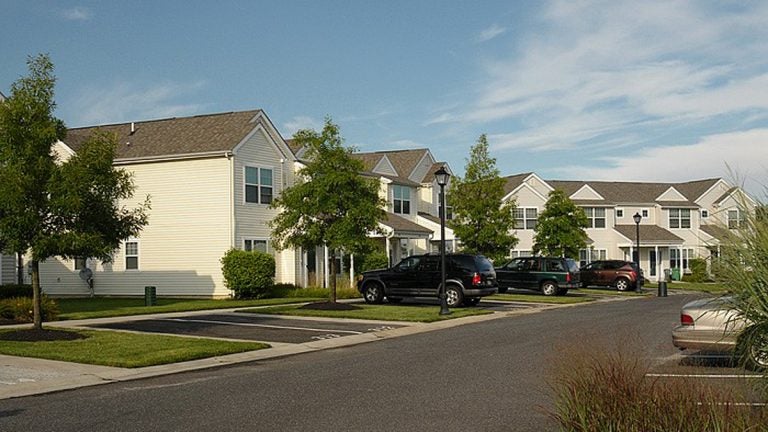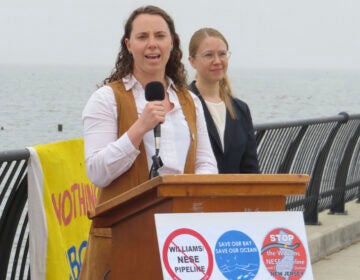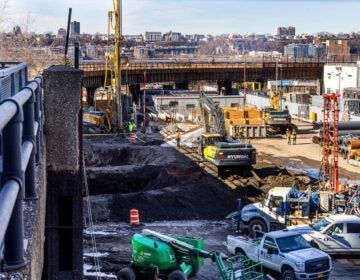Plan to force New Jersey towns to build more low-income homes stalled

(Photo courtesy of Fair Share Housing Development)
With less than three months left for the Council on Affordable Housing (COAH) to meet a state Supreme Court mandate to determine each New Jersey municipality’s affordable housing obligation, the consensus in the housing community is that there’s no way for the currently inactive agency to meet its deadline.
Speaking Friday at a panel on the most recent of three Mt. Laurel Doctrine Supreme Court rulings, some of the state’s most prominent builders, municipal representatives, and housing attorneys agreed that even if COAH were to meet immediately for the first time since last May, the volunteer board wouldn’t be able to submit its draft regulations with enough time to allow for the required 60-day public comment period.
This leaves the board with two options: petition the Supreme Court for an extension or ignore the court’s mandate.
Panelists at the PlanSmart NJ event believe that Department of Community Affairs (DCA) commissioner Richard Constable, who doubles as COAH chairman, will likely ask for an extension at the behest of Gov. Chris Christie.
But even if the adamantly anti-COAH Christie administration were to ignore the court order, experts don’t think the justices would let the administration or COAH wiggle out of the obligation.
“The Supreme Court said, ‘We’re willing to consider options but we’re not backing down from Mt. Laurel,'” said Kevin Walsh, associate director of Fair Share Housing Center. Walsh argued the case on behalf of the plaintiffs, seeking to force the municipalities to meet their obligations.
If the court chooses to be lenient, it can appoint a special master, an expert who can be brought in to assist the court in trying extremely complex cases.
Or it can try to force the administration’s hand by standing aside and letting COAH fail in its obligation to set fair-housing guidelines. That would leave the municipalities open to so-called builder’s remedies, which enable developers to sue to put up as much market-rate housing as they want — since there are no Mt. Laurel guidelines in place. It also means that municipalities would effectively lose control of development, and the resultant displeasure would almost certainly be directed at the administration.
This year, the Supreme Court heard Mt. Laurel for the third time since it was originally written in 1975. Despite decisions that placed responsibility on suburban municipalities to build an adequate amount of low-income housing, the doctrine has been avoided and circumvented by elected local officials who’ve found loopholes to keep construction from beginning. In yet another effort to close those loopholes, the Supreme Court ruled in late September that municipalities can no longer resist residential development as a way to prevent affordable housing from being built.
Instead, the Court is requiring municipalities to enforce their affordable housing obligations until they meet a certain threshold. It is this threshold that is to be determined by COAH. The formula already exists; COAH just needs to decide whether to stick with that formula and update its figures by the last week of February.
Constable has not responded publicly to the ruling, and at least one COAH member says he hasn’t heard whether he plans to call a meeting.
“I’ve not had any communication with the commissioner or the office as to what the action they’re planning to take,” said Timothy Doherty, who’s been a COAH board member since 2008. “I anticipate that the COAH board will meet to address the issues as outlined by the Court.”
Doherty concedes that the holdup may be caused by a lack of staffing and the need to repopulate the personnel roster. He says the DCA dedicated up to 20 full-time employees to COAH when he joined the council (the agency met approximately once a month at that time) but now he can’t name one.
Although the DCA website lists a dozen contacts for the office, panelists concurred that staffers they know have been “repurposed” to other positions. They added that none of them have been contacted to discuss the required calculations. A DCA spokesperson could not be reached on Sunday, and the state’s top housing experts remain unclear on the council’s status.
“The cynical view is that the lights are out at COAH, the doors are shut, and nothing’s happening there. I can’t imagine that’s really the case,” said Jeffrey Surenian, whose legal practice focuses exclusively on representing municipalities in Mt. Laurel-related cases. “They know as day follows night that if they don’t meet their deadlines there’s going to be litigation and they’re going to have to answer to the Supreme Court.”
But Gov. Christie, who appointed Constable, has remained steadfast in his opposition to COAH — established specifically to oversee implementation of the Mt. Laurel doctrine — since before his first day in office. He’s not only called the Mt. Laurel Doctrine an “abomination,” he’s tried unsuccessfully to re-allocate its trust fund and get it subsumed into another agency. COAH hasn’t met since his efforts to derail funding failed in May.
“This system is really broken and it’s not getting any better,” said former DCA commissioner and COAH chair Lori Grifa. “We’re no further along in the process . . . There’s no doubt they’re going to ask for an extension because to not do so will require them to flex some muscles I’m not sure they’re willing to flex.”
“We’re in purgatory,” lamented Doherty. Apparently no one — except maybe Constable and the governor’s administration – knows what will happen next. And in this case, time is money. Not only are low-income house-hunters being kept from finding new places to live but builders across the state are anxiously waiting for municipalities to learn their obligation so they can green-light plans for new residential projects.
“There’s a substantial backlog in our ability to provide housing. Developers have money to start today but they’re waiting for decisions,” said Creigh Rahenkamp, a litigator who researches and analyzes land-use policy. And while they’re waiting, say panelists, New Jersey is undersupplying its population’s housing needs.
“When people were put out in Sandy there was nothing to rent,” said Grifa.
With the housing market showing no signs of easing, New Jersey is losing 2,700 net citizens a year, according to Forbes magazine. And, says Rahenkamp, they’re migrating to regions of the country whose ecosystems are already fragile and, in some cases, overburdened. “To me that’s a moral failure as well as an environmental disaster,” he said. Christie’s office did not respond to a request for comment on Friday.
_____________________________________________________________
NJ Spotlight, an independent online news service on issues critical to New Jersey, makes its in-depth reporting available to NewsWorks.
WHYY is your source for fact-based, in-depth journalism and information. As a nonprofit organization, we rely on financial support from readers like you. Please give today.




